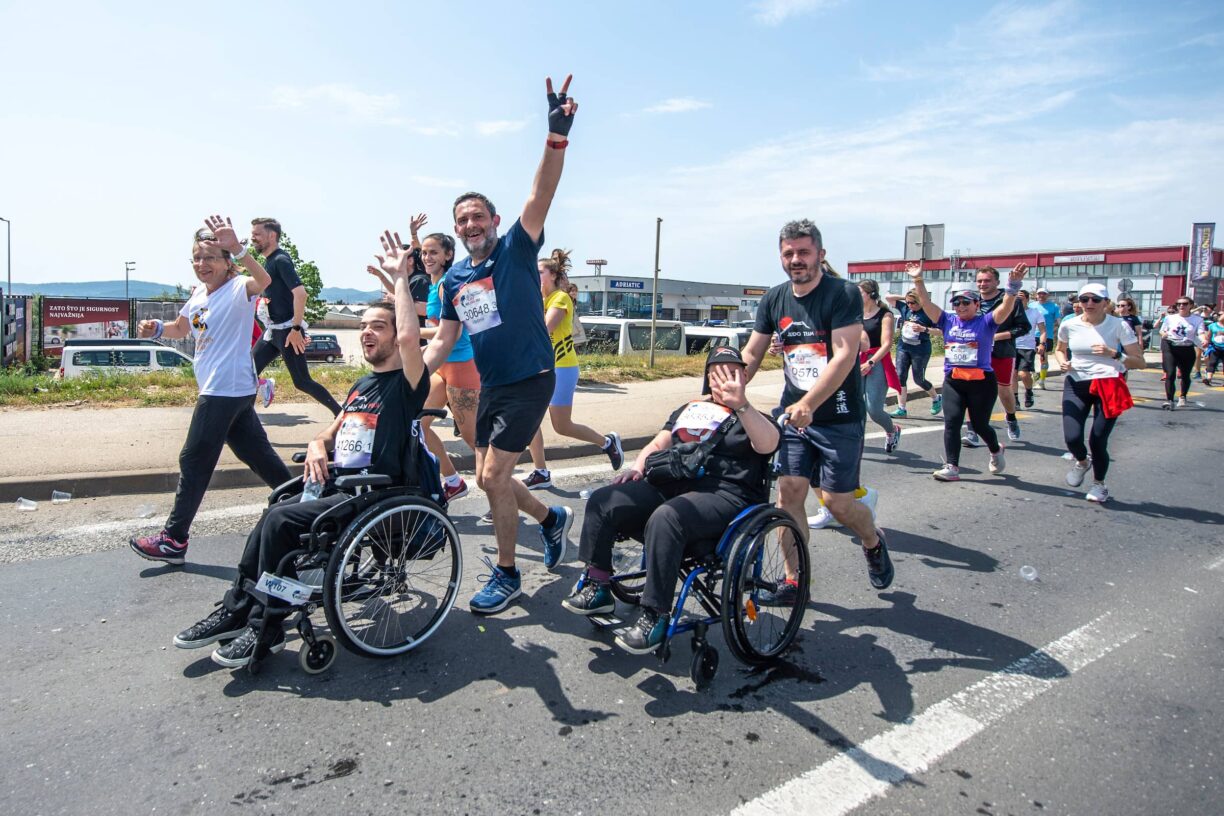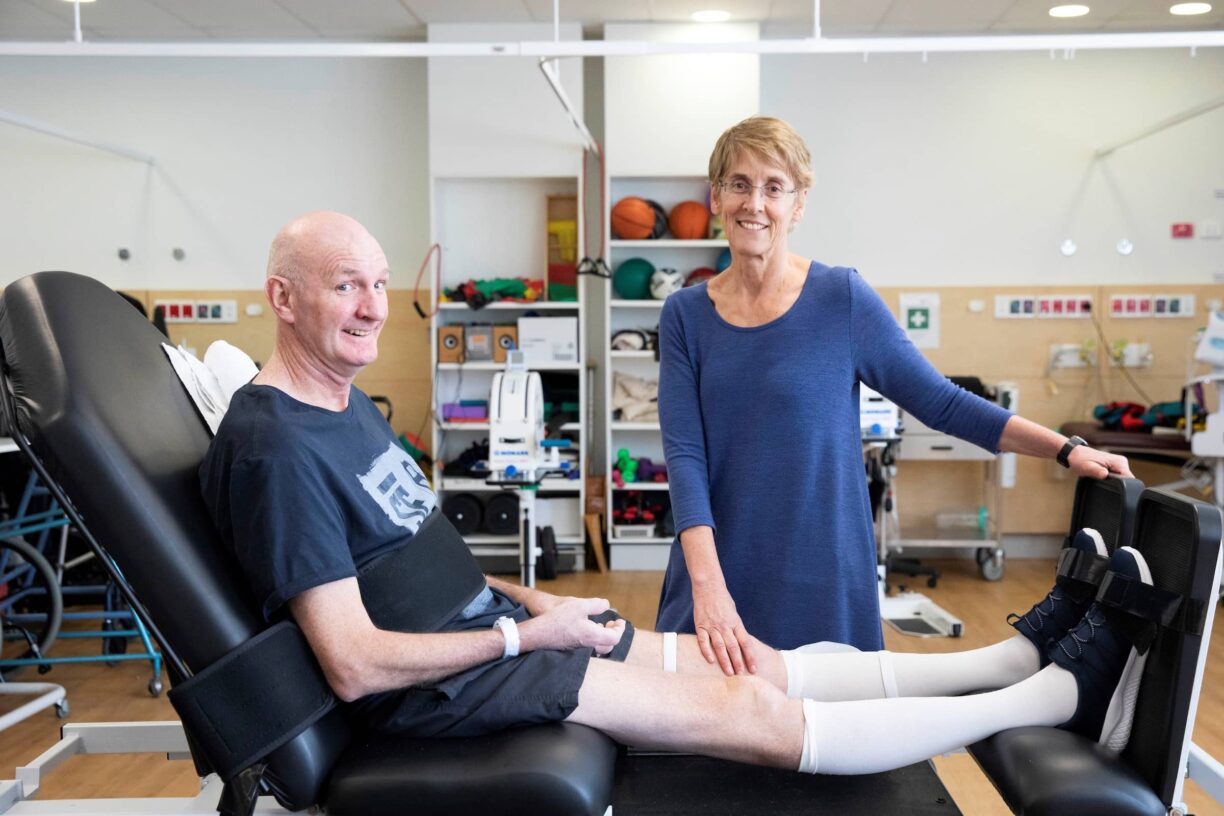Groundbreaking research is underway around the world to find a cure for spinal cord injuries, and seven projects financed by the Wings for Life Foundation, the non-profit organisation funded by charitable donations from the Wings for Life World Run, are giving hope to those affected.
The central nervous system is a particularly complex area for research, with many different factors impacting spinal cord injuries, such as the immune system, bladder and bowel functions, and circulatory system.
However, this complexity also leads to a wide range of approaches and areas to pursue, which is particularly exciting from a scientific perspective.

Seven innovative projects funded by the Wings for Life Foundation include a new therapy designed to lower the concentration of glutamate, electrical stimulation of the spinal cord at the neck level, inducing nerve fibres to regrow using magnetic fields and using stem cell grafts and high-intensity rehabilitation training to stimulate the plasticity of the spinal cord.
All of these projects offer hope for those with chronic spinal cord injury and have the potential to revolutionize treatments for spinal cord injuries.
Here are some of the exciting projects currently underway:
1. Toxic Glutamate – Sagol School of Neuroscience, Tel Aviv University, Israel
Glutamate is a vital messenger substance in the central nervous system, but high levels can also cause nerve cells to die, leading to nerve damage.
The Toxic Glutamate project aims to lower the concentration of glutamate following nerve injury, reducing the toxic effect and resulting damage. This approach could lead to improved recovery and regeneration.
2. Electrified Skin – Electrical & Computer Engineering, University of Washington, Seattle, USA
Electrical stimulation of the spinal cord at the neck level has been shown to lead to significant and long-lasting improvements in hand function in patients with chronic, high-level spinal cord injury.
The Electrified Skin project aims to investigate whether combining stimulation via the skin on the neck and at the lumbar spine, coupled with intensive rehab training, could increase this effect.
3. Magnetically Lengthening Nerve Fibers – Università Di Pisa & National Research Council, Pisa, Italy
Nerve fibres can be induced to regrow after a spinal cord injury, but it is a complex process.
The Magnetically Lengthening Nerve Fibers project aims to stimulate nerve growth by utilising magnetic fields to generate small tensile forces that encourage length growth in nerve cells.
This concept could potentially be combined with other procedures, such as stem cell therapy or the expansion of nerve networks, to heal injured spinal cords.

4. Spinning and Strengthening Nerve Networks – Leopold Franzens University Innsbruck & Paracelsus Medical University Salzburg, Austria
The Spinning and Strengthening Nerve Networks project aims to restore nerve connections through induced neural stem cells and counteract scar formation, which impedes regeneration.
The project employs special vesicles, typically responsible for communication between cells, which are intended to regenerate nerve connections and be the cornerstone of therapy for patients with chronic spinal cord injury.
5. Tracking Down Genetic Codes – Neuroscience, University of California, San Diego, USA
The corticospinal system is the most important human motor nerve pathway, yet it is also the pathway least capable of regeneration.
The Tracking Down Genetic Codes project aims to develop a combination therapy that combines stem cell grafts placed at the injury site and high-intensity rehabilitation training. After the genetic code has been deciphered, pharmacological agents featuring a similar genetic profile could be applied to new drug therapy for spinal cord injury patients.
6. Shrewd Transplantation – Shirley Ryan AbilityLab, Chicago, USA
Transplantation of Schwann cells into the damaged spinal cord can restore nerve tissue, but the new cells often die quickly at the injury site.
The Shrewd Transplantation project introduces a special biomaterial that helps reduce the hostile conditions within the wound, increasing the survival rate of the newly transplanted Schwann cells.
This novel, two-stage strategy could fundamentally transform cell transplantation and subsequently cure spinal cord injuries.
7. Early, High-Intensity Movement Training – Faculty of Medicine and Health, University of Sydney, Australia
Early and intensive motor training is currently the most promising therapy for spinal cord injuries. Mainly because such training stimulates the plasticity of the spinal cord, i.e. the ability to form new connections.
A study by Australian neuroscientists led by Lisa Harvey is exploring the effectiveness of early and intensive motor training on recovery and individual body functions.
Recently injured patients are being assessed at several centres around the world in order to quickly put the knowledge gained into practice.
This study has the potential to change the rehabilitation of spinal cord injury patients worldwide.
These seven exciting projects, which are currently funded by the Wings for Life Foundation, offer hope for those suffering from spinal cord injuries. The Wings for Life World Run helps to raise funds for spinal cord research, with every cent going towards finding a cure.
The next Wings for Life World Run will take place on May 7th, and participants can run individually with the Wings for Life World Run App or together in several Flagship Runs.
Regardless of running ability, the event is all about having fun while supporting a worthy cause. 100% of entry fees and donations go directly to spinal cord research.
Register for the Wings for Life World Run HERE





